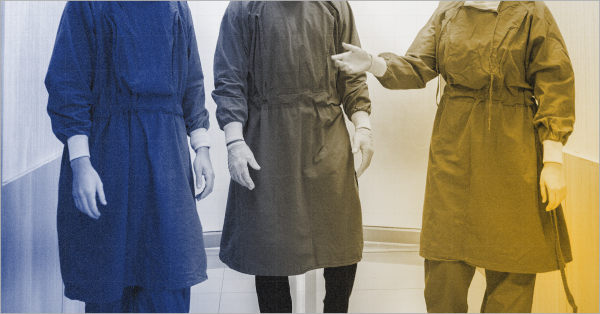Insurance policies are designed to provide individuals and businesses with financial protection against risks and unforeseen events. One important yet often misunderstood concept in insurance law is vicarious liability. While most people may have heard of liability in the context of accidents or negligence, vicarious liability takes things a step further, holding one party accountable for the actions of another.
In the context of business insurance, especially in India, understanding vicarious liability is crucial for both policyholders and insurers. So, if you have ever wondered who’s responsible when someone else’s actions cause harm or how your insurance policy could be affected by another’s behaviour, this blog post is for you. Let’s dive into the details of vicarious liability in the world of insurance.
What Is Vicarious Liability?
At its core, vicarious liability refers to a situation where one party is held liable for the actions of another, even though the first party did not directly commit the wrongful act. It’s a legal concept based on the principle that certain relationships, such as employer-employee or principal-agent, create a responsibility for one party to be held accountable for the actions of another.
In simple terms, vicarious liability works on the idea that if someone is working on behalf of another, the “employer” or “principal” can be held responsible for their actions, even if they didn’t directly cause the damage. This principle is particularly significant in the world of insurance because it determines who is liable and how claims are handled.
For example, if an employee causes an accident while driving a company car, the employer may be held liable for damages, even though the employer wasn’t directly involved in the incident. In such cases, the employer’s third-party Motor Insurance Policy—mandatory under the Motor Vehicles Act, 1988—would typically cover liability for injuries or damage caused to third parties. However, coverage for the driver or for damage to the company vehicle may depend on whether a comprehensive policy or personal accident cover is in place.
In India, the application of vicarious liability in insurance policies is governed by various laws, primarily through tort law, contract law and specific statutory provisions related to insurance. The most significant laws that impact vicarious liability include the Indian Contract Act, 1872 and the Motor Vehicles Act, 1988. In the Indian context, the most common form of vicarious liability involves situations where an employer is held accountable for the actions of their employees, or a business is held accountable for the actions of its agents. This extends to various types of insurance, from employer liability to Motor Insurance and Public Liability Insurance.
Vicarious liability has been recognised by Indian courts as a valid legal principle. Indian courts, including the Supreme Court, have upheld the doctrine of vicarious liability in several rulings, such as State Bank of India v. Shyama Devi (1978) and Kasturilal Ralia Ram Jain v. State of UP (1965), reinforcing the idea that employers or principals can be held liable for the wrongful acts of employees done in the course of employment. This means that insurers must account for vicarious liability when underwriting policies, determining premiums and handling claims. It also implies that individuals and organisations must be mindful of the scope of their coverage and understand when they could be held liable for someone else’s actions.
Types of Business Insurance Policies with Vicarious Liability
Several types of business insurance policies in India can be impacted by vicarious liability. Let’s explore some of the most common policies that often include clauses related to vicarious liability:
1. Auto Insurance (Motor Insurance)
One of the most common examples of vicarious liability in the insurance world is motor insurance. In India, if an employee is driving a company vehicle and causes an accident, the employer can be held vicariously liable for the employee’s actions. This liability is typically covered under the third-party liability component of a vehicle insurance policy.
For instance, if an employee causes injury to a pedestrian while driving a company car, the company’s motor insurance would likely cover the vicarious liability claim made by the injured party. The insurance policy would then compensate the victim and the employer would not have to bear the full financial burden of the accident.
2. Workers’ Compensation Insurance
Vicarious liability in the context of Workers’ Compensation Insurance refers to the legal principle where an employer is held responsible for the actions of their employees that result in injury or death during the course of employment. Under the Employees’ Compensation Act, 1923 (formerly known as the Workmen’s Compensation Act), an employer is required to provide compensation to workers who suffer from occupational injuries or diseases.
Vicarious liability ensures that if an employee is injured or killed while performing their duties, the employer’s Workers’ Compensation Insurance policy will cover the compensation, regardless of whether the employer was directly at fault. This principle extends to situations where an employee’s negligence or actions within the scope of their job lead to harm. The policy, therefore, protects employers financially, ensuring that they meet the legal obligations for compensating workers under such circumstances.
3. Professional Liability Insurance
Vicarious liability in the context of Professional Liability Insurance refers to the responsibility of an employer or principal for the actions or negligence of their employees or agents in the course of providing professional services.
Under this principle, if an employee or agent of a professional service provider (such as a lawyer, doctor or accountant) makes an error or omission that leads to harm or loss to a client, the employer or principal can be held liable. Professional Liability Insurance, also known as Errors & Omissions (E&O) Insurance, covers the costs of legal defence and any damages awarded in such cases.
In this way, vicarious liability ensures that the professional business is financially protected if an employee’s professional misconduct or negligence results in a claim, even though the employer or principal may not have directly been at fault. Professional Liability Insurance helps mitigate the financial risks for employers, ensuring that clients’ rights are upheld while also providing coverage for the actions of the professionals working under their authority.
4. Commercial General Liability Insurance
In the context of Commercial General Liability (CGL) Insurance, vicarious liability refers to the legal responsibility of a business to cover the costs of damages or injuries caused by its employees or agents while performing their duties on behalf of the business.
If an employee or agent of a business causes harm to a third party through negligence or wrongful acts during the course of their work, the business can be held vicariously liable. While contractors may be covered under certain circumstances, businesses are not automatically vicariously liable for their actions unless a specific principal-agent relationship or negligent supervision is established.
CGL Insurance provides coverage for such situations, ensuring that the business is protected from the financial consequences of claims arising from bodily injury, property damage or personal injury caused by its employees or agents. This coverage extends to incidents that occur within the scope of employment, even if the employer was not directly at fault. Vicarious liability within CGL policies helps businesses manage the risks associated with the actions of their employees and agents. Thus, this business insurance safeguards the company from potential lawsuits and financial loss.
How Vicarious Liability Impacts Insurance Claims
When a vicarious liability claim is filed, there are several important factors to consider. For the policyholder, this means understanding how the insurer will handle the situation and whether the specific vicarious liability claim falls under the scope of the policy.
For business insurance companies, it means assessing the relationship between the parties involved and determining if vicarious liability applies. In cases where an employee or agent is involved, the insurer will closely examine the contractual agreements between the employer and the employee to establish whether vicarious liability is valid.
Proving Vicarious Liability
To prove vicarious liability in insurance claims, several key elements must be established:
- Existence of a Relationship: A valid relationship (employer-employee, principal-agent) must exist between the party causing the harm and the party being held responsible.
- Scope of Employment or Authority: The actions causing harm must have been committed within the scope of the individual’s employment or authority.
- Negligence or Wrongdoing: There must be evidence that the individual acted negligently or wrongfully in causing the incident.
Key Factors Affecting Vicarious Liability in Insurance
Vicarious liability in insurance is influenced by several key factors:
- Negligence: Was the action taken by the employee or agent negligent or intentional? This can significantly impact the extent of liability.
- Consent: If the action was done with the consent or authorisation of the employer or principal, vicarious liability is more likely to apply.
- Authority: Did the individual have the authority to act on behalf of the employer or principal at the time of the incident?
Understanding these factors is crucial for policyholders who want to protect themselves from potential claims. Insurance companies will also consider these elements when deciding whether to pay out a vicarious liability claim.
The Bottomline:
Vicarious liability is a significant concept in both insurance law and liability law in India. It holds businesses and individuals accountable for the actions of others under specific circumstances. Whether you are a business owner or an employee, understanding how vicarious liability works in your insurance policies is essential to protect yourself from financial risk.
By reading the fine print of your policy, understanding the scope of coverage and staying proactive in training employees and agents, you can ensure that you are prepared for any situation that might arise due to vicarious liability. So, the next time you consider your insurance options, take the time to factor in vicarious liability and safeguard your interests!








